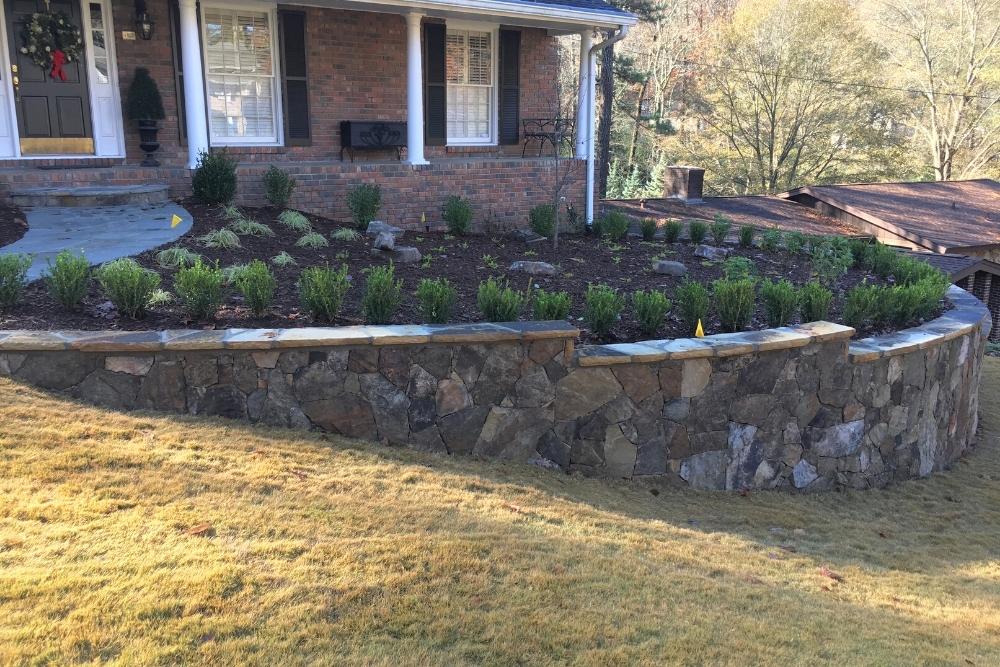Frequently Asked Questions
Are there specific regulations for landscape retaining walls?
Yes, landscape retaining walls are subject to specific regulations that vary by location. It's important to check local building codes and zoning laws, as permits may be required for walls over a certain height or in specific areas.
How do retaining laws impact property values?
Retaining walls can enhance property values by improving the aesthetic appeal, preventing erosion, and creating usable outdoor spaces. A well-designed retaining wall adds functionality and can elevate the overall marketability of a property.
Are there any exemptions to landscape retaining laws?
Yes, there are potential exemptions to landscape retaining laws, often depending on local regulations. Small-scale landscaping or projects on private property may not require a permit. Always check with your local authorities for specific guidelines.
What is the purpose of landscape retaining laws in urban planning?
Landscape retaining laws in urban planning aim to ensure stability, prevent erosion, and manage water runoff, while promoting aesthetic value and ecological balance in urban environments. These regulations help maintain safety and integrity in community development.
How do retaining laws affect landscape architecture designs?
Retaining laws influence landscape architecture designs by dictating the structures' stability and aesthetics, ensuring they enhance both functionality and compliance with local regulations. This affects material choices, height specifications, and overall design integration in the landscape.
What is the role of local governments in enforcing landscape laws?
Local governments play a crucial role in enforcing landscape laws by establishing regulations, monitoring compliance, and managing permits. They ensure that landscaping practices promote environmental sustainability, protect property values, and enhance community aesthetics.
Do retaining laws vary by state or region?
Yes, retaining wall laws can vary significantly by state or region. Local regulations may dictate structural requirements, permits, and zoning codes, so it's essential to check with local authorities before construction.
Are there penalties for violating landscape retaining laws?
Yes, violating landscape retaining laws can result in penalties, which may include fines, mandatory removal of non-compliant structures, or restoration of the landscape. It's important to adhere to these regulations to avoid legal issues.
What factors influence retaining wall design?
Factors influencing retaining wall design include soil type, wall height, drainage needs, load-bearing capacity, aesthetics, and local regulations. These elements ensure stability, prevent erosion, and complement the overall landscape of your property.
How are retaining walls inspected for safety?
Retaining walls are inspected for safety by examining their structural integrity, checking for signs of erosion or displacement, assessing drainage systems, and ensuring that there are no visible cracks or bulges. Regular inspections help maintain their stability and effectiveness.
What materials comply with landscape laws?
Materials that comply with landscape laws typically include native plants, permeable pavers, and environmentally sustainable materials like reclaimed stone or wood. Always check local regulations for specific guidelines and approved materials.
Can retaining walls be built near watersheds?
Yes, retaining walls can be built near watersheds, but it’s essential to follow local regulations and guidelines to ensure proper drainage and prevent erosion. Consulting with a professional can help ensure safety and functionality.
What is the cost of retaining wall compliance?
The cost of retaining wall compliance varies based on materials, height, and local regulations. Generally, you can expect to spend between $15 to $50 per square foot, including permits and professional installation.
How to choose a contractor for retaining walls?
When choosing a contractor for retaining walls, research their experience, check references, and ensure they have the necessary licenses and insurance. Additionally, request detailed quotes and compare designs to find a contractor that aligns with your vision and budget.
What are aesthetic considerations for retaining walls?
When considering the aesthetics of retaining walls, think about materials, colors, textures, and landscaping integration. A well-designed wall can enhance your home's visual appeal while complementing your outdoor space and surrounding environment.
How do retaining walls improve drainage systems?
Retaining walls improve drainage systems by directing water away from your home’s foundation, reducing the risk of erosion and flooding. They create a stable barrier that enhances soil permeability, allowing for better water management in landscaped areas.
What are the best practices for maintaining retaining walls?
Regularly inspect retaining walls for cracks, bulging, or drainage issues. Ensure proper drainage to prevent water buildup and erosion, and maintain vegetation to avoid excess root pressure. Lastly, clean debris to enhance wall longevity and functionality.
Can landscaping affect the stability of retaining walls?
Yes, landscaping can significantly affect the stability of retaining walls. Proper soil management, plant selection, and drainage practices are essential to prevent excess weight and erosion, which can compromise wall integrity.
What documentation is needed for retaining wall permits?
For retaining wall permits, you typically need a site plan, construction drawings, and any necessary engineering calculations. Additionally, proof of ownership and compliance with local zoning regulations may also be required.
How can homeowners contest retaining law violations?
Homeowners can contest retaining law violations by gathering evidence, reviewing local regulations, and filing a formal appeal with their local zoning or building authority, often accompanied by documentation and, if necessary, legal representation.



